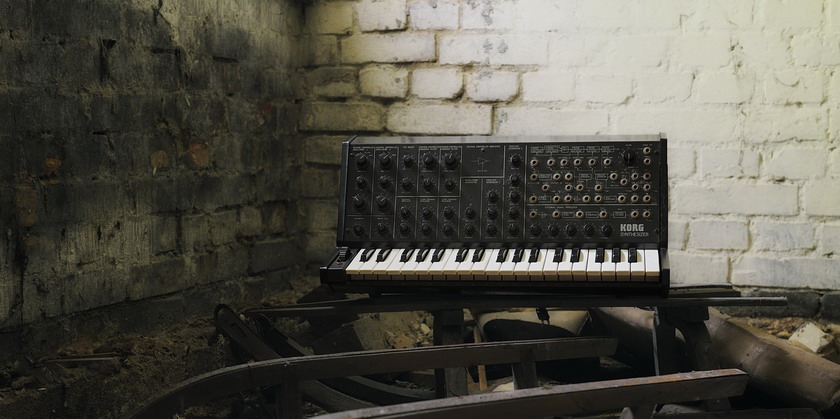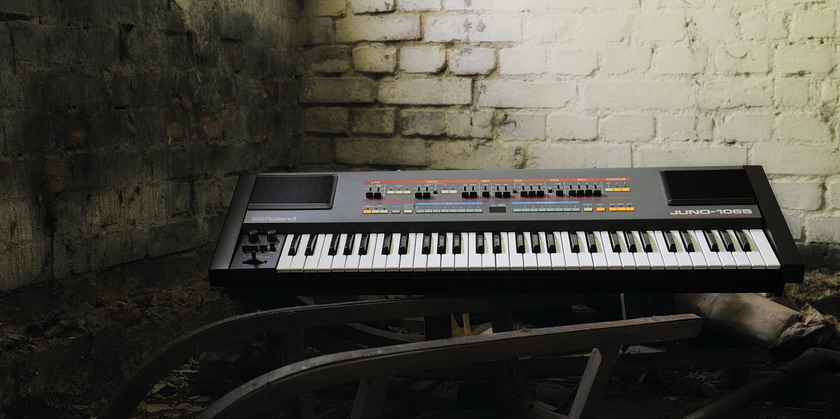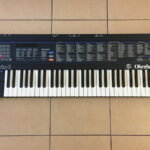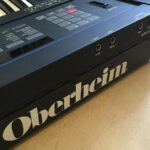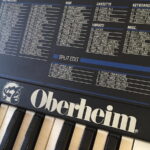One may say that the Matrix 6 is difficult to program but truth is that, even from the panel (not to mention software editors!), dialing up new patches quickly becomes second nature. The sounds M6 produces are smooth, evolving but may quickly become agressive and kicking should the player decide so. It’s a very, very deep machine.
Oberheim’s famous Modulation Matrix is not a gimmick, too. It’s 18 hard-wired and 10 user definable “virtual patch cords” that turn the Matrix 6 into a semi-modular synthesizer. Examples? How about aftertouch controlled resonance amount? Or maybe let’s route velocity to amplifier’s envelope “release” stage, so that the harder you play, the longer the notes play. We can get weird, too. When keyboard is patched to oscillators and given negative value, keyboard will play in reverse – up will be down and vice versa. Performers will also love the fact that you can patch external pedal to portamento time and use your foot to change the amount of portamento when you are busy playing. As you can see, the options are extremely powerful.
Each of our Matrices receives an in-depth overhaul. Aside many other things, we replace all of the tact switches (i.e. microswitches) on the panel.
The M6 offered here is one of the best we have ever seen, hence the price.
PRICE:
1200 EUR at 0% VAT (1107 EUR including 23% VAT).
Please click on the “Contact” tab in the top right corner of the page if you are not sure whether VAT applies to you.
FREQUENTLY ASKED QUESTIONS
Q: Can the Matrix 6 be called a “half of Matrix-12”?
A: The M-6 is definietly not a half of the mighty Matrix-12 as it would then have to be a keyboardless Xpander (that also has 6 note polyphony). It’s not. The M-12 and Xpander (they have the same engine) have far more options (more filter modes, more LFOs, more envelopes, more “virtual patch-cords”) but the M-6 and M-12/Xpander share one very, very important thing: the Modulation Matrix. This is what makes them simple polyphonic modular synthesizers which is a very unique option. The bottom line is: the Matrix-6, however simple it may be, is a hugely powerful instrument that shares the logic that lies behind the M-12/Xpander. I can hardly imagine you will find it limited.
Q: Some say it’s very difficult to program. Is that true?
A: I think it’s not. But contrary to instruments that have all of the sliders and switches right on the panel, the Matrix 6 has all of the functions accessible through a few buttons (or a computer editor). What this means is that you simply have to think what you are doing. If you are not a sound tweaker and expect immediate results, simpler instrument like Juno-106 or Korg Polysix might be more suitable for you. There are no good and bad ways of making music – if the idea of programming a simple modular synthesizer in your mind first is too complicated for you, just look somewhere else. I program the Matrix 6 or Xpander with ease but learning to program the Yamaha DX-7 simply defeated me. Of course these are almost incomparable but the idea is: if time passes and you still struggle without effects you like, just skip it. We have far less time for music than we think.












